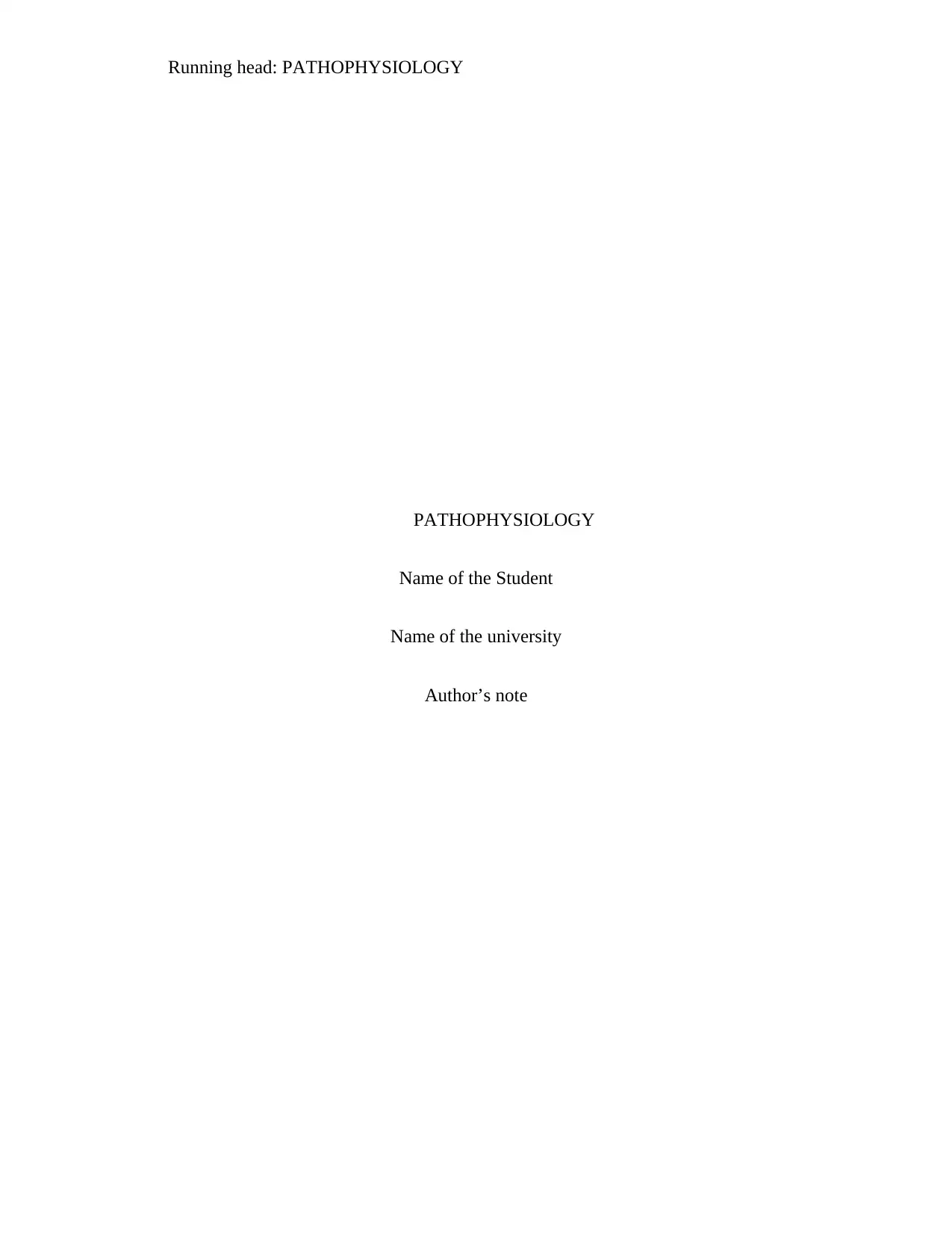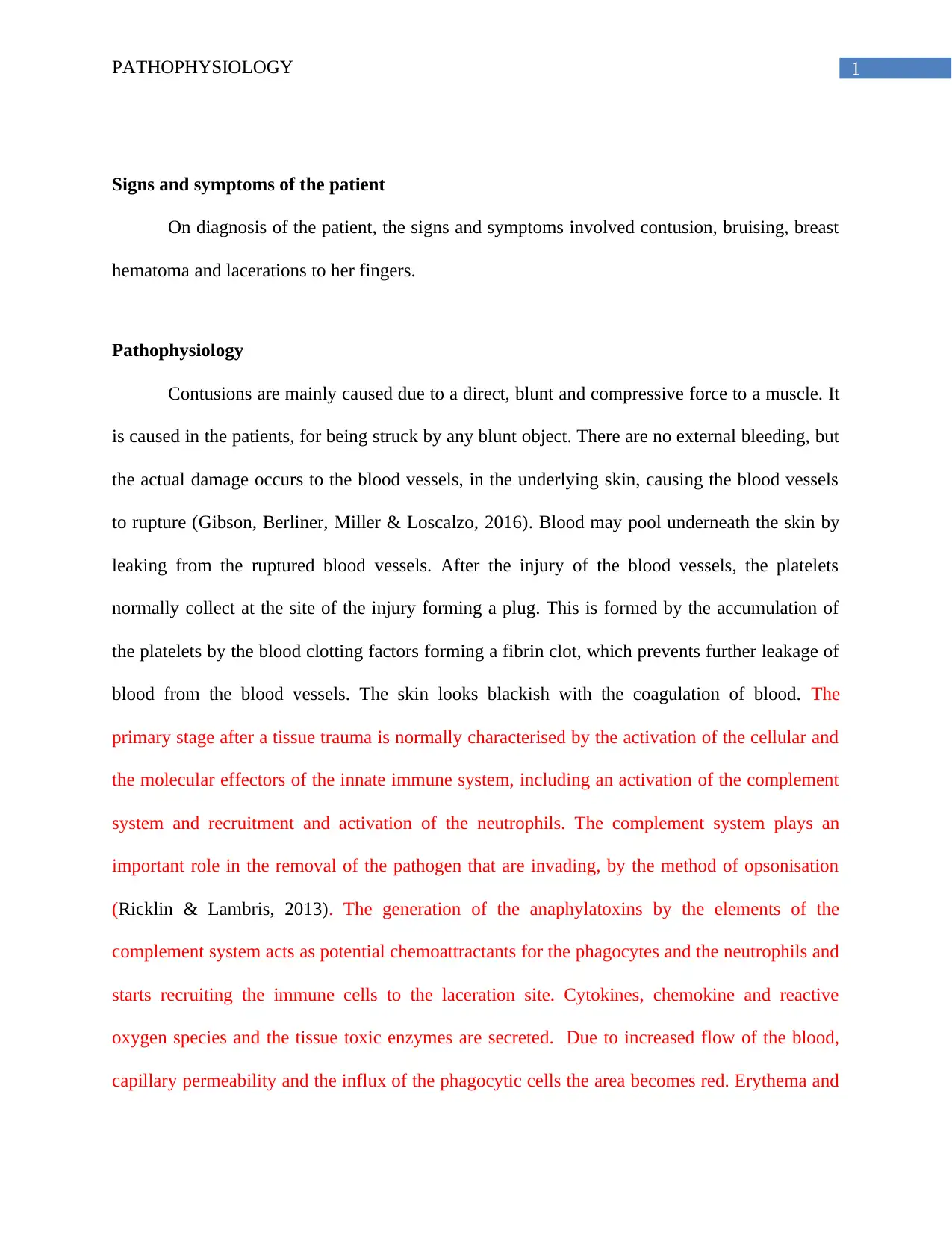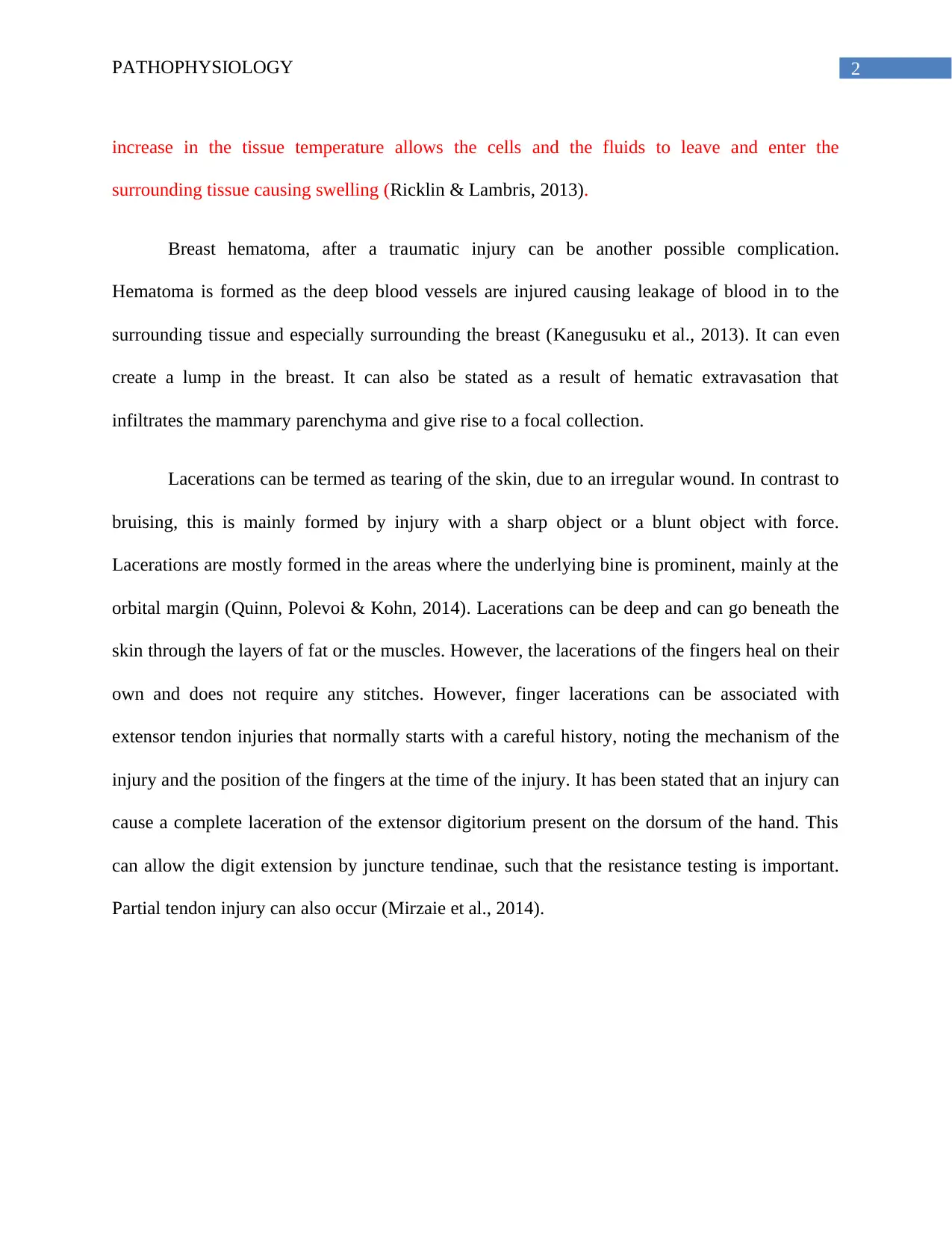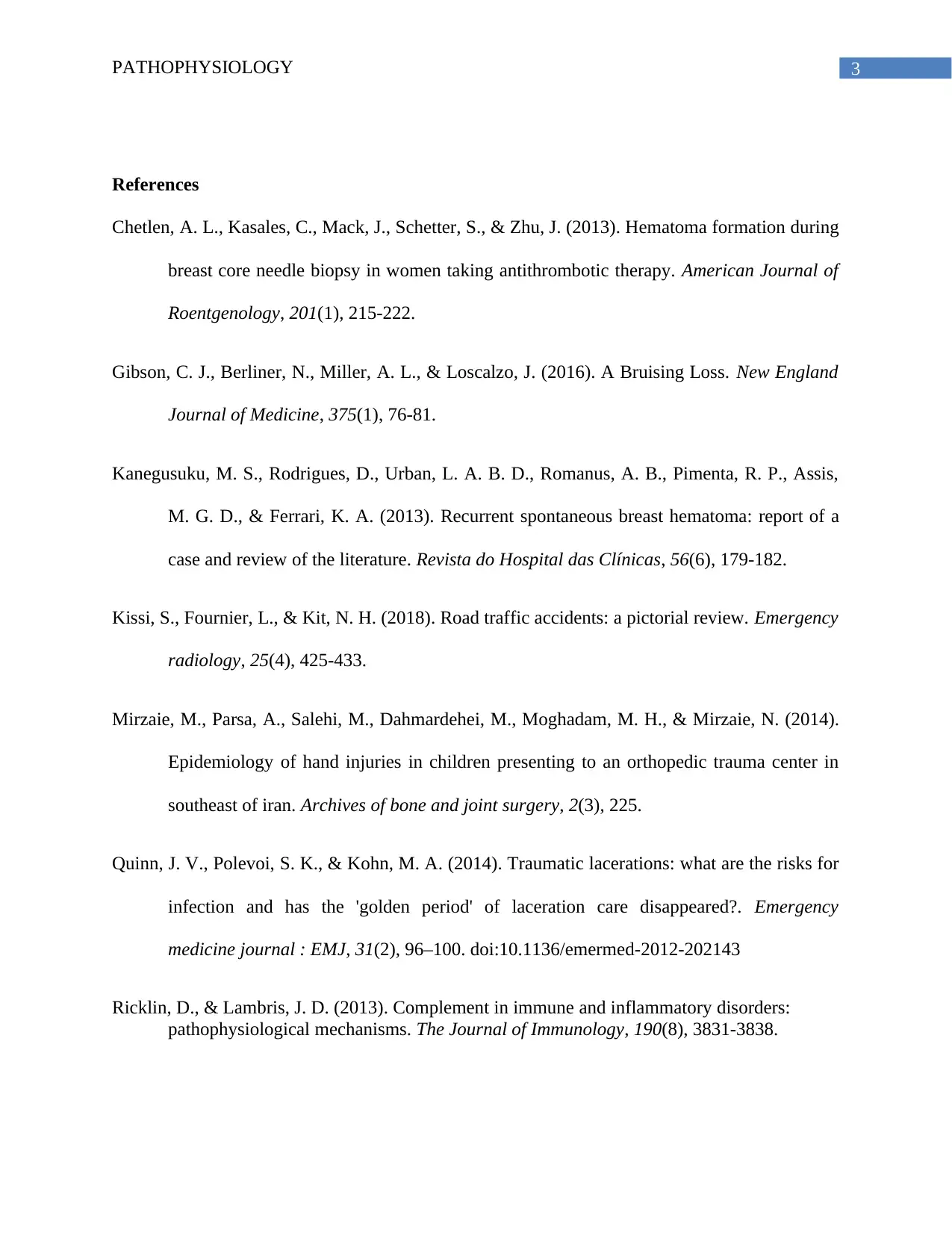Pathophysiology Report: Analysis of Patient's Signs and Symptoms
VerifiedAdded on 2022/08/13
|4
|994
|14
Report
AI Summary
This report provides a detailed analysis of the pathophysiology of a patient presenting with contusion, bruising, breast hematoma, and finger lacerations. It explores the mechanisms behind contusions, which are caused by blunt force trauma leading to blood vessel rupture and blood pooling beneath the skin. The report explains the role of platelets and blood clotting factors in forming a fibrin clot to prevent further bleeding. It also delves into the body's immune response, including the activation of the complement system and the recruitment of neutrophils and phagocytes to the injury site. The report further discusses breast hematoma and lacerations, differentiating between the causes and healing processes. References are provided to support the information presented. This assignment is available on Desklib, a platform offering study resources like past papers and solutions to help students succeed.
1 out of 4







![[object Object]](/_next/static/media/star-bottom.7253800d.svg)